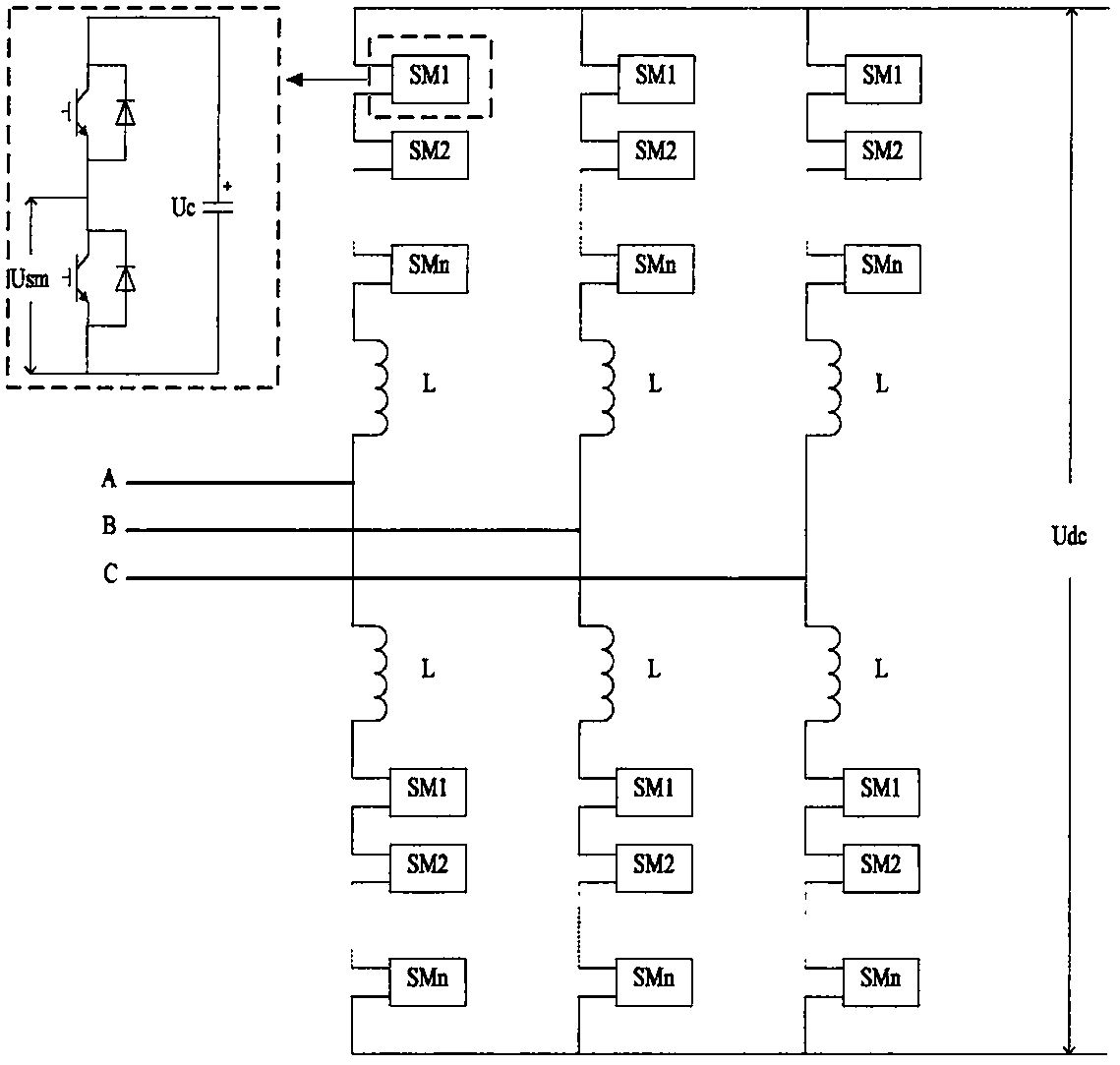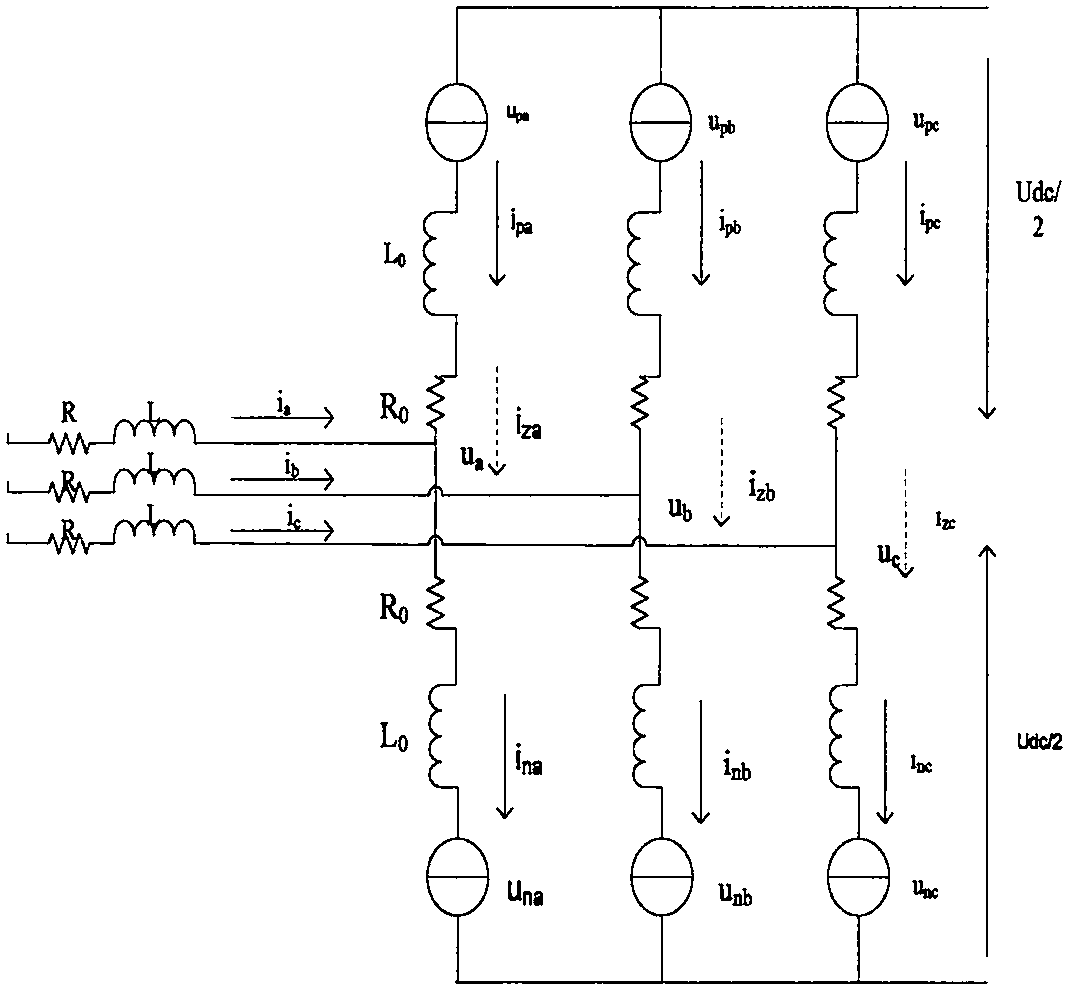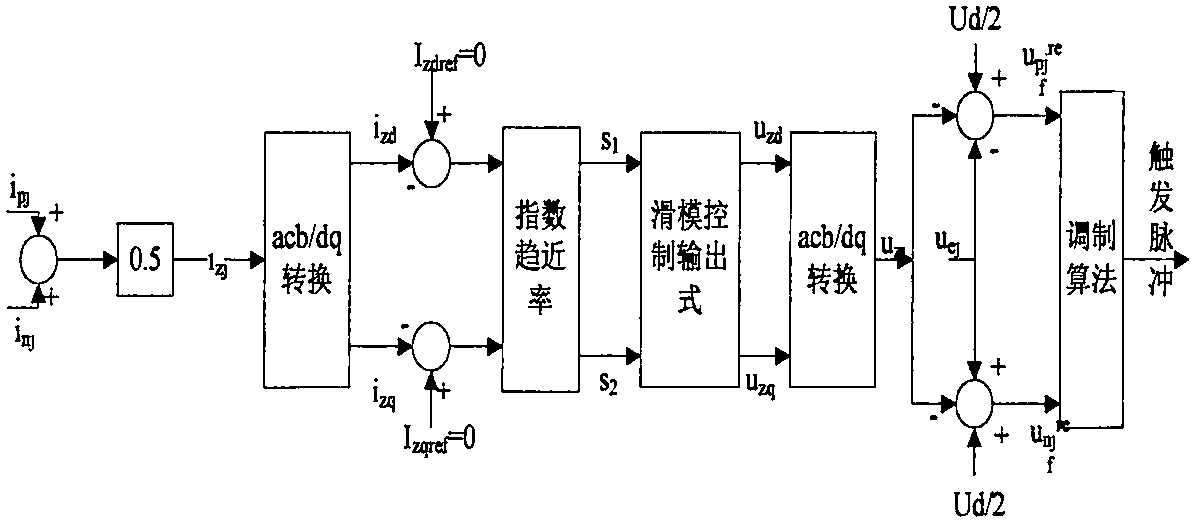Sliding mode control-based MMC (Modular Multi-Level Converter) circulating current suppression method
A circulating current suppression, sliding mode technology, applied in power transmission AC network, output power conversion device, AC power input conversion to DC power output, etc. and other problems, to achieve the effects of good dynamic characteristics, reduced distortion rate, and fast response speed
- Summary
- Abstract
- Description
- Claims
- Application Information
AI Technical Summary
Problems solved by technology
Method used
Image
Examples
Embodiment Construction
[0019] The MMC circulation suppression method based on the sliding mode controller will be described in detail below with reference to the accompanying drawings and examples.
[0020] Depend on figure 1 It can be seen that in the MMC topology diagram, the modular multilevel (MMC) has 6 bridge arms, and each bridge arm is formed by cascading many sub-modules. This example uses a 21-level MMC high-voltage direct current transmission system, so each bridge arm has 20 sub-modules, 10 for each of the upper and lower bridge arms. Taking the A-phase bridge arm as an example, build a model in the electromagnetic transient simulation software PSCAD / EMTDC, the AC system voltage is 230kV, and the rated power is 1200MVA. The specific suppression measures are as follows:
[0021] First, by monitoring the current i of the upper and lower bridge arms of the MMC pj and i qj , using the bridge arm current formula
[0022]
[0023] The size of the bridge arm circulation can be calculated...
PUM
 Login to View More
Login to View More Abstract
Description
Claims
Application Information
 Login to View More
Login to View More - R&D
- Intellectual Property
- Life Sciences
- Materials
- Tech Scout
- Unparalleled Data Quality
- Higher Quality Content
- 60% Fewer Hallucinations
Browse by: Latest US Patents, China's latest patents, Technical Efficacy Thesaurus, Application Domain, Technology Topic, Popular Technical Reports.
© 2025 PatSnap. All rights reserved.Legal|Privacy policy|Modern Slavery Act Transparency Statement|Sitemap|About US| Contact US: help@patsnap.com



